You might have noticed I’m obsessed with Honeybells. I’ve fallen hard for their clever marketing ploys, but I don’t care. I love them.
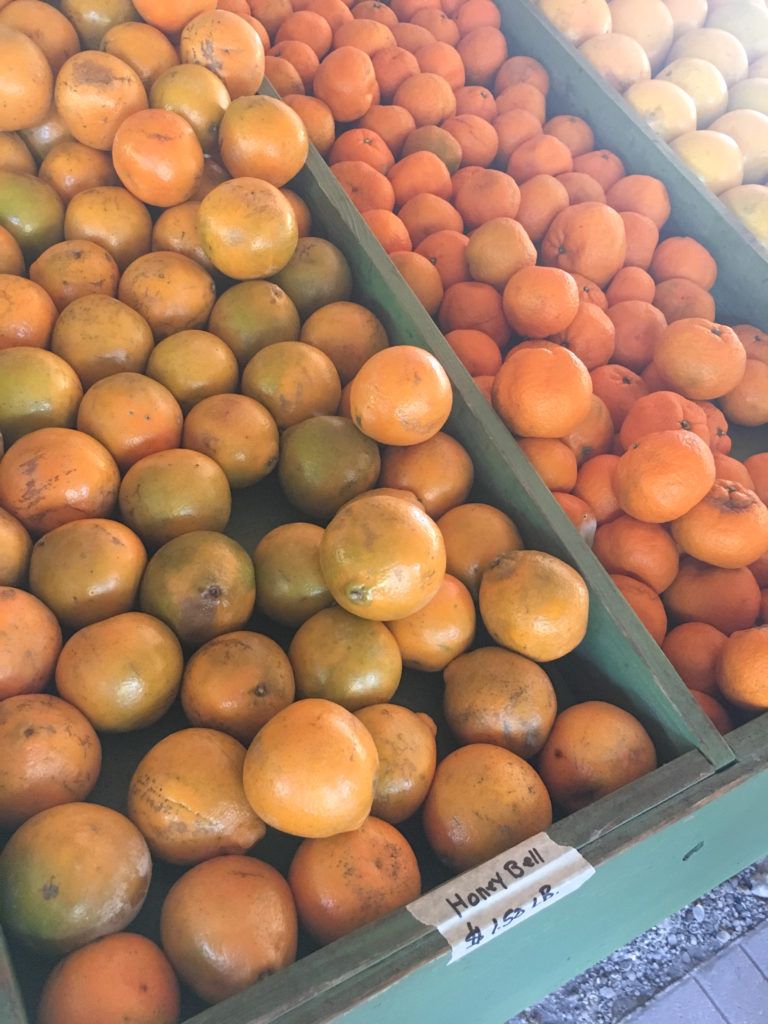 Florida citrus growers must have had an adman the likes of Don Draper working on the Honeybell campaign, bestowing the fruit with that lovely name, a nod to their bell shape and sweet flavor. It was meant to appeal to folks outside the Sunshine State, but I know I’m not the only Floridian who looks forward to them every winter.
Florida citrus growers must have had an adman the likes of Don Draper working on the Honeybell campaign, bestowing the fruit with that lovely name, a nod to their bell shape and sweet flavor. It was meant to appeal to folks outside the Sunshine State, but I know I’m not the only Floridian who looks forward to them every winter.
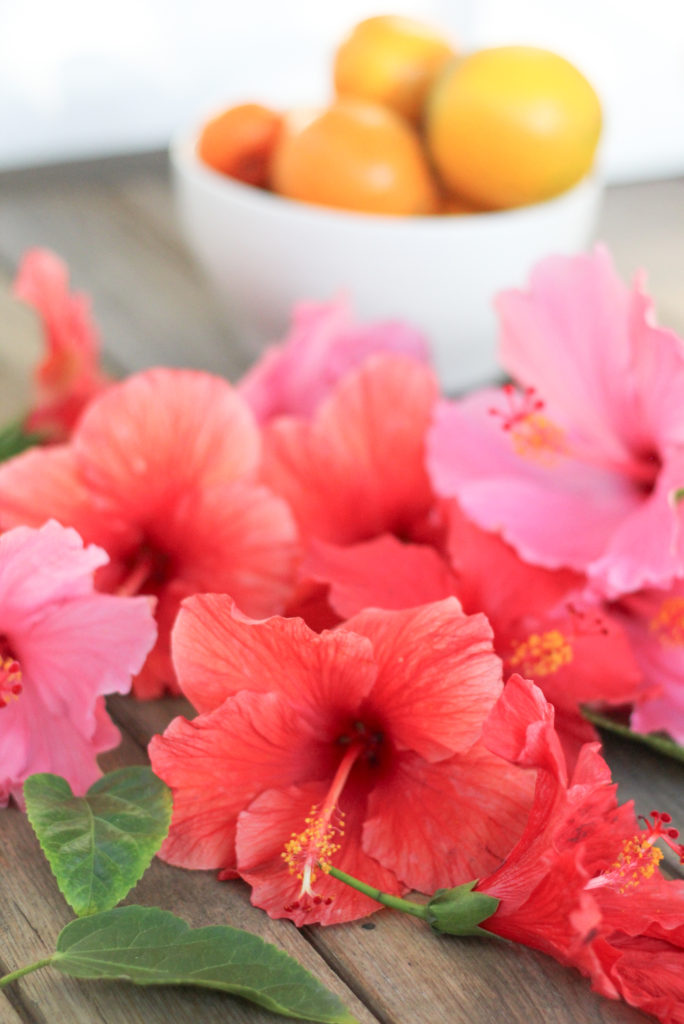 Now I know damn well these are just tangelos, and that’s what I should call them. Minneolas are tangelos, too, and they’re equally juicy, easy to peel, and have the same vibrant flavor with very few seeds. But the words Minneola and tangelo don’t have the same allure as Honeybell.
Now I know damn well these are just tangelos, and that’s what I should call them. Minneolas are tangelos, too, and they’re equally juicy, easy to peel, and have the same vibrant flavor with very few seeds. But the words Minneola and tangelo don’t have the same allure as Honeybell.
Besides the pretty name, the campaign hits us with the scarcity principle, constantly reminding us this fruit will only be available in January and February. Get them now, before they’re gone! And it’s true, over the years I’m hard-pressed to find them come March. Sometimes I wonder if they’re holding back on us, filling warehouses with fruit for some black market. How could the season possibly be that short? That is not the normal. I’ll think about that while I eat another Honeybell.
This year I decided to get one over on them, and by them I mean those crafty, Honeybell-hiding citrus barons. I’m making my own Honeybell jelly so I can taste them all year long. I use fresh hibiscus because it enhances the citrus flavor and I like that punch of color. You can use fresh or dried flowers (and good old Red Zinger tea works, too).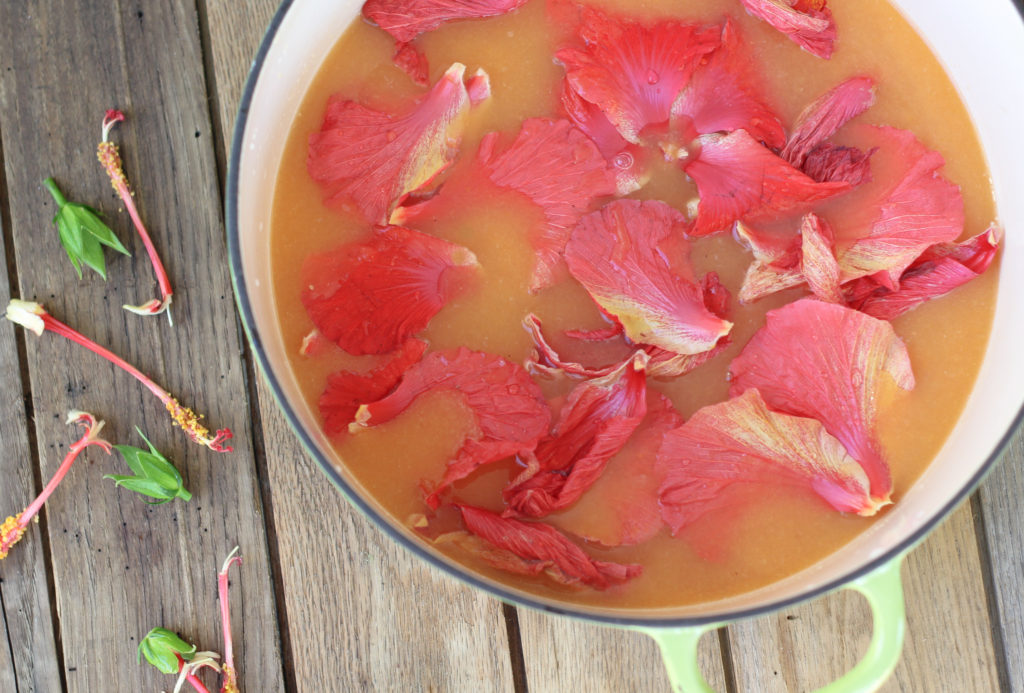 Starting today, this jelly is the centerpiece of Saturday morning breakfasts. Just add carbs: croissants, bagels, toast, muffins…. Or stir it into yogurt. Whatever floats your boat.
Starting today, this jelly is the centerpiece of Saturday morning breakfasts. Just add carbs: croissants, bagels, toast, muffins…. Or stir it into yogurt. Whatever floats your boat.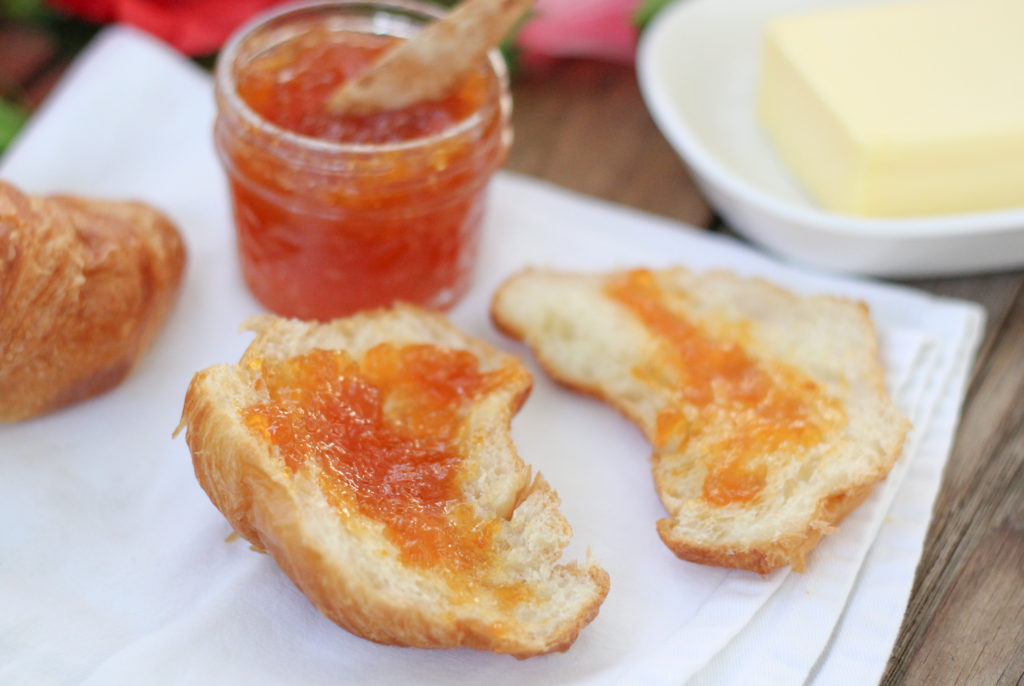 I can’t wait to open a jar right in the middle of summer. Here it is, the secret to Honeybells all year, but unless you know where they hide them, you’ve only got a few more weeks to make it:
I can’t wait to open a jar right in the middle of summer. Here it is, the secret to Honeybells all year, but unless you know where they hide them, you’ve only got a few more weeks to make it:
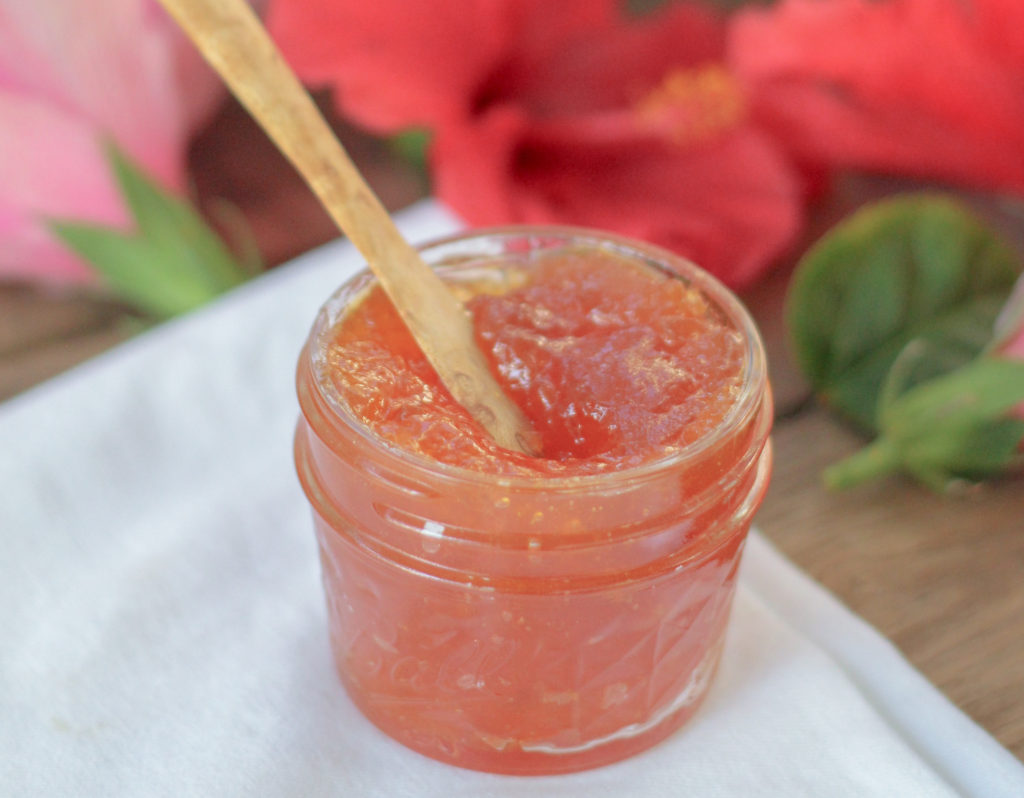
- 4 cups fresh Honeybell (tangelo) juice
- petals from 6 hibiscus flowers or 1/4 cup dried flowers
- 2 teaspoons calcium water*
- 1/2 cup lemon juice
- 2 cups sugar or 1 cup honey
- 4 teaspoons Pomona's pectin*
- Add the juice and hibiscus petals into a saucepan. Add calcium water and lemon juice, mix well. Simmer until it turns a beautiful orange-pink shade. Either strain through a cheese cloth-lined sieve for clear jelly or remove hibiscus petals with a slotted spoon if you would like to retain some citrus pulp. Return the strained juice mixture to the pot and bring to a boil.
- Combine the sugar and pectin in a bowl and mix well.
- Stir in the sugar/pectin mixture into the boiling juice until it dissolves and continue stirring, allowing the mixture to return to a boil. Remove it from the heat. Pour into jars and allow to cool.
- Refrigerate the jam and use it within a few weeks, or follow directions for water bath canning (link below the recipe) to preserve it for up to a year.
- *I use Pomona's pectin and the calcium it comes with because unlike other types of pectin, you can use any sweetener you like and adjust it to your taste (you'll find a link for it below).
- If you use another type of pectin, consult the directions for juice/ sugar/ lemon/ pectin ratios.
- The hibiscus flowers will work just fine in any recipe.
Water bath canning instructions
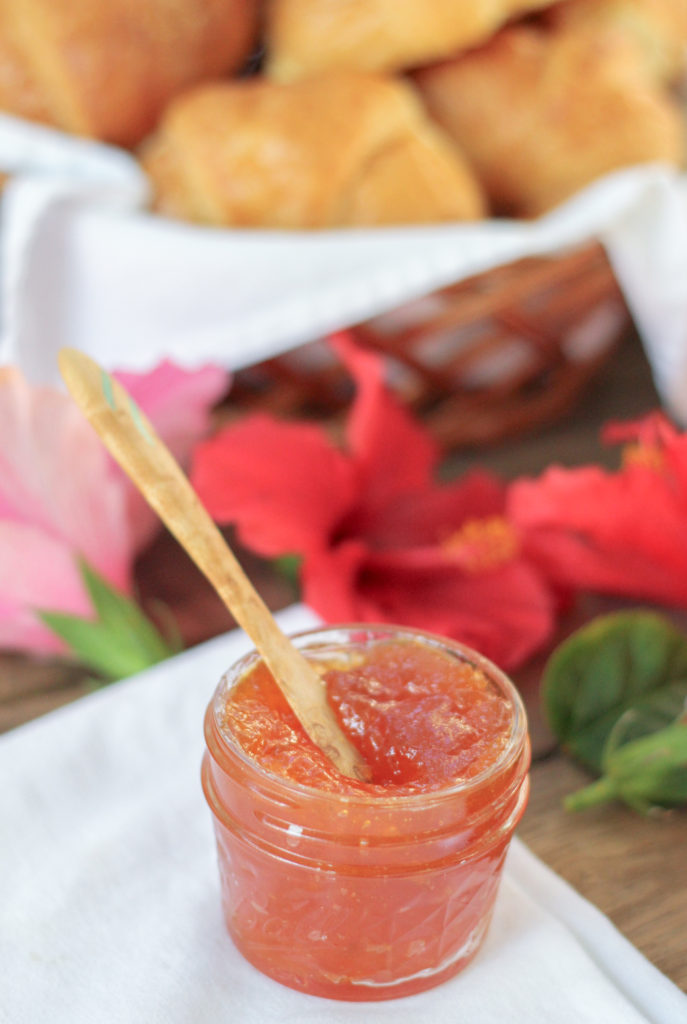
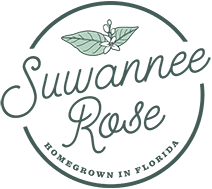
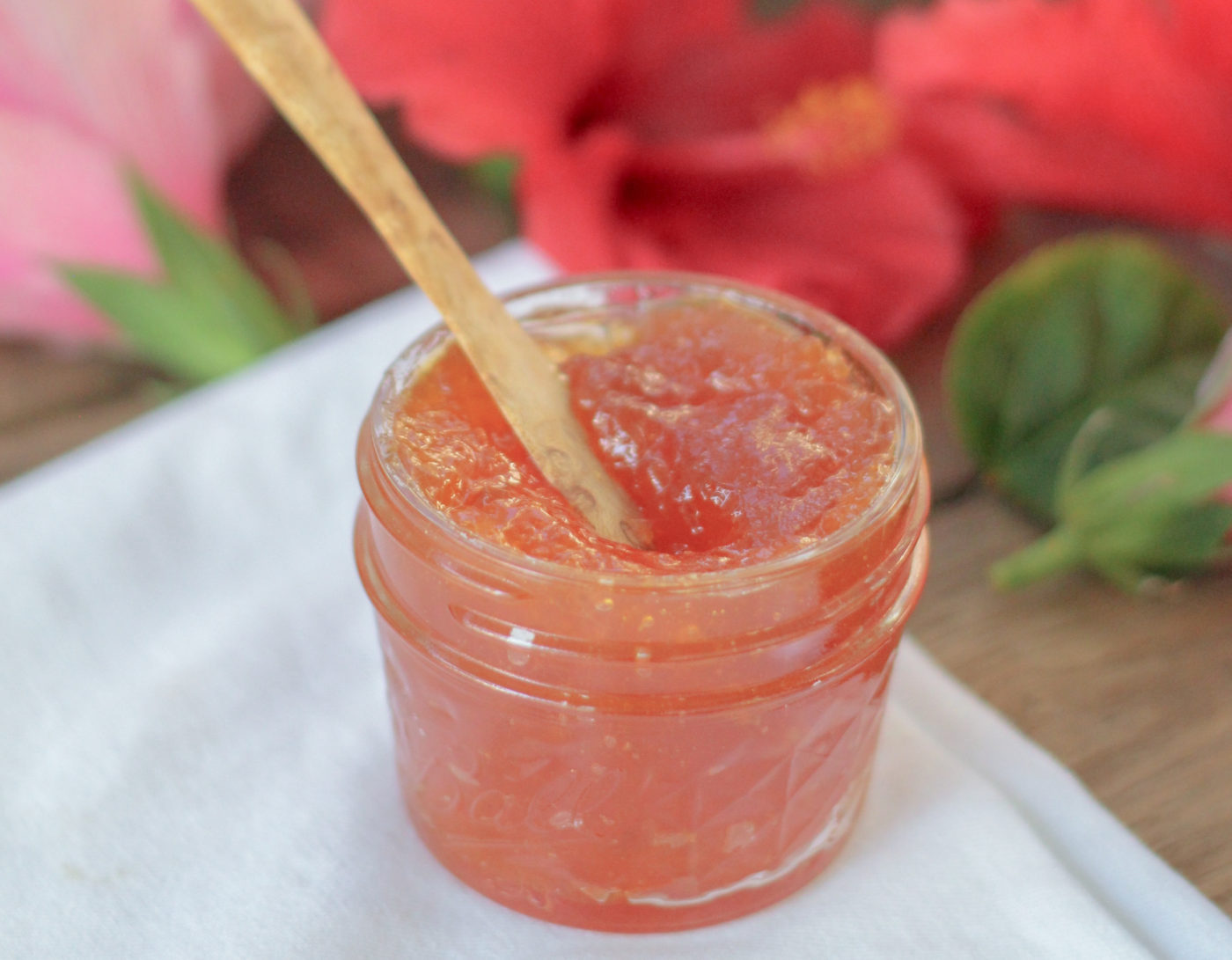
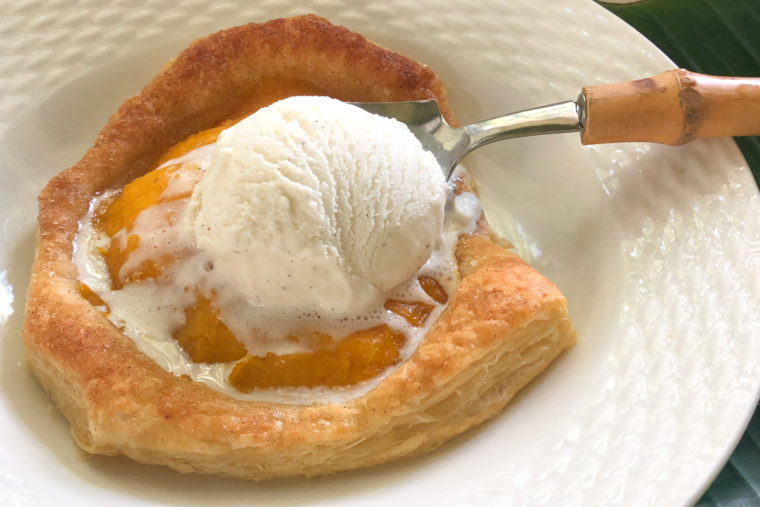
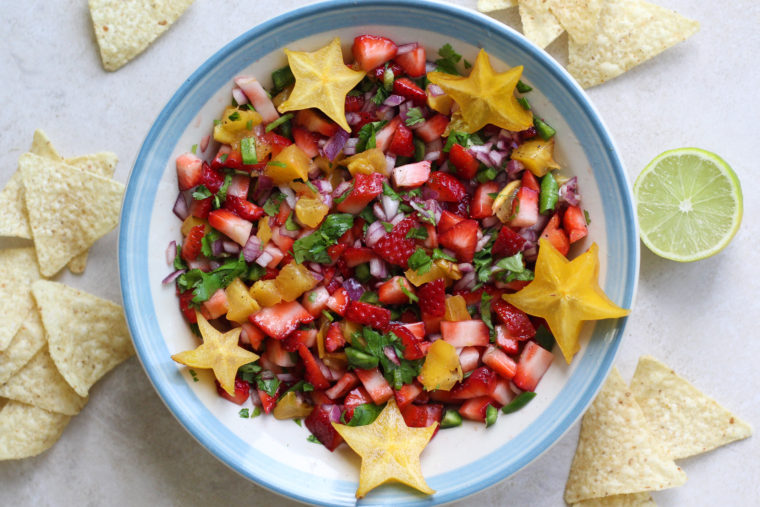
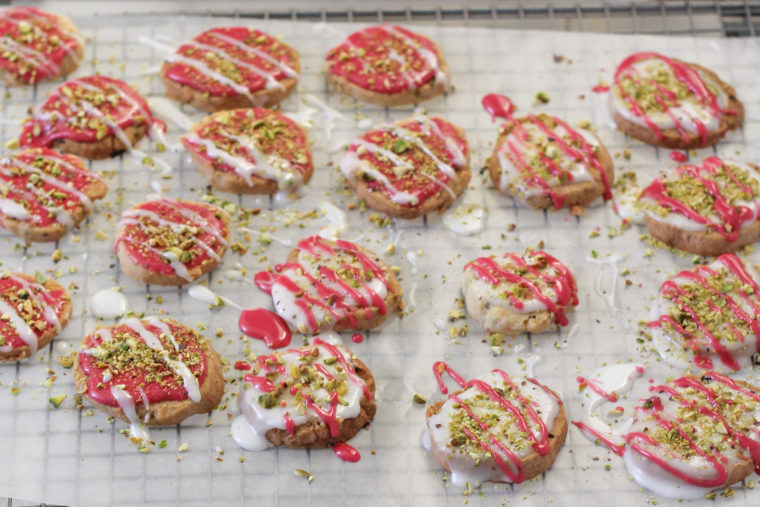
Yummy! I’m going to pick up some Honeybells today 🙂
I just ate one. 🙂
We are in the north so hibiscus are blooming now. I have a marvelous tangerine tea that I can infuse into the hibiscus tea for the tangelo flavor. I hope it works!
How can that not be fantastic? Enjoy!
Is there enough natural pectin in the oranges and the lemon that I can do this without pectin for a fresher taste?
I suspect there is, but you’ll have use some tests and tricks along the way. There’s even more natural pectin in the seeds and pith, so you can put those in some cheesecloth and add them in during the simmer. Use a candy thermometer and make sure it reaches 220 degrees. Then there’s this old trick- put a plate in the freezer before you get started. When you think your jelly is done, put a dollop on the plate and put it back in the freezer. Take it out two minutes later. If it forms a skin and wrinkles a bit when you touch it, it’s done. Please let me know how it goes.
I haven’t made this recipe yet, but I do know there is pectin in dried jamaica (Hibiscus sabdariffa). I will use jamaica for the marmalade instead of ornamental hibiscus picked in the yard (Hibiscus rosa-sinensis). Dried jamaica is not really flower petals, it’s the bracts left after the flower had died.
Hi mj,
I grow jamaica as well (roselle, cranberry hibiscus). I didn’t realize it has natural pectin, good to know! I’m sure it will be fantastic for my next batch of jelly. Thanks!
Do you leave the hibiscus flowers in? You don’t say to remove them, but I don’t see them in the finished product photos. I’ve never cooked with them before, so forgive me if this is a silly question.
Thank you so much for pointing that out, Rhanda! I definitely removed them. I’ve updated the recipe. If you would like to retain some citrus pulp, just remove with a slotted spoon. If you’d like a nice clear jelly, strain through a cheese-cloth lined sieve.
OMG! First, let me say that your directions are spot on. I picked up some of the Pomona’s pectin but had never used it before. Finding your recipe gave me the chance. I have over 10 Hibiscus (Rose of Sharon) trees on my property. I went out early this morning and picked about 8 large, open flowers. Mine are purple, not red. This was super easy to make, tastes delicious and setup perfectly. Now I need to find more recipes using the Pomona’s!
Thank you, Terry! I’m glad to hear it worked so well for you. I feel like Pomona’s is so forgiving and versatile. I love it.